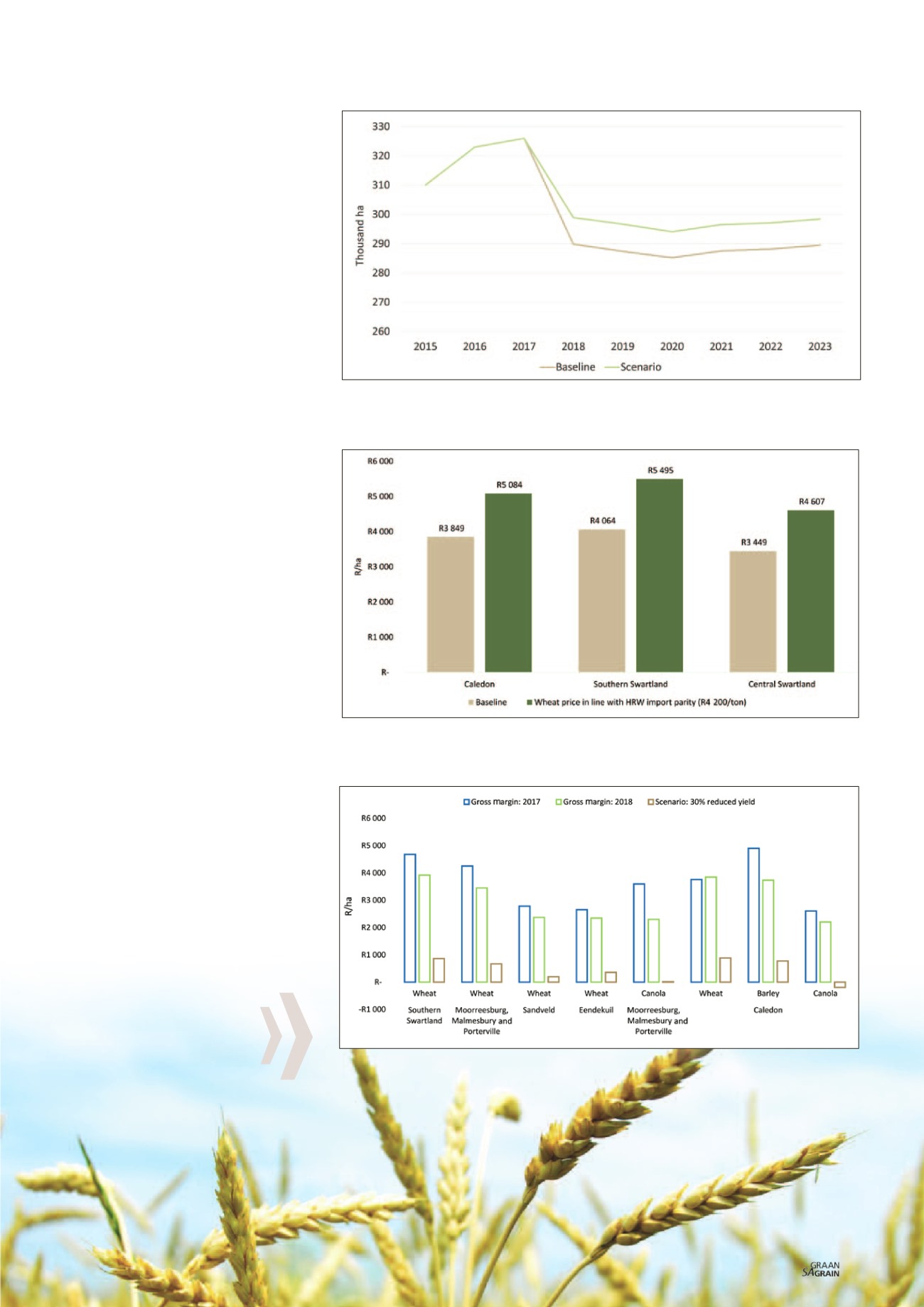

95
August 2018
In the meantime support is needed to keep
producers in production and more competi-
tive than imports until there are cultivars
available to increase the yield. This is done
through the import tariff, which ensures that
the local processors prefer local produce.
So, what is the impact of all this on the sus-
tainability of the producers? According to
BFAP, if the local price moves from a Rus-
sian import parity level to a hard red winter
parity price, the hectares will increase with
± 10 000 ha, while the price will move from
± R3 800/ton level to ± R4 200/ton.
As elucidated in
Graph 1
, a substantial in-
crease is required to obtain gross margin
levels. Keep in mind that the gross margin
constitutes only the income with a deduc-
tion of the direct costs. In the Swartland
area, R2 400/ha must be utilised to pay
fixed costs. If you lease land an additional
R2 700/ha has to be deducted and then
you still need to buy equipment, pay main-
tenance, pay labour, electricity, land tax,
living expenses etc. This means that the
increase in the gross margin will assist the
producer to pay fixed costs and improve
sustainability.
In winter grain production, profits are ex-
tremely sensitive to yields. With a decrease
of 30% yield – similar to the drought – it
is clear that producers cannot even make
money on a gross margin basis. This means
that the producer cannot even cover their
directly allocable costs. The opposite is
also true: If we can increase the yield of
the crops, this will substantially assist in
terms of profitability and sustainability.
Producers can use less nitrogen in their
production systems because of the changes
in grades due to lower protein requirement.
Keep in mind that, according to the Inter-
national
agri benchmark
network, South
Africa has the highest production costs.
Because of the reduction in intrinsic
values to levels that is still competitive with
imports it is expected that we can over time
increase the yields by 30%. BFAP develop-
ed a few scenarios to illustrate this effect.
From this scenario can be deduced that the
reduction in nitrogen and the increase in
yield can result in an increase in the gross
margin; and gross margins can almost
double. This means that the producer has
close to R6 000/ha to cover fixed costs
which makes production more sustainable
(
Graph 4
).
Graph 1:
Increase of hectares in the Western Cape production region – quality versus value.
Source: BFAP
Graph 2: Gross margin increase – quality versus value.
Source: BFAP
Graph 3: Sensitivity of yield reduction within winter grain production.
Source: BFAP
















